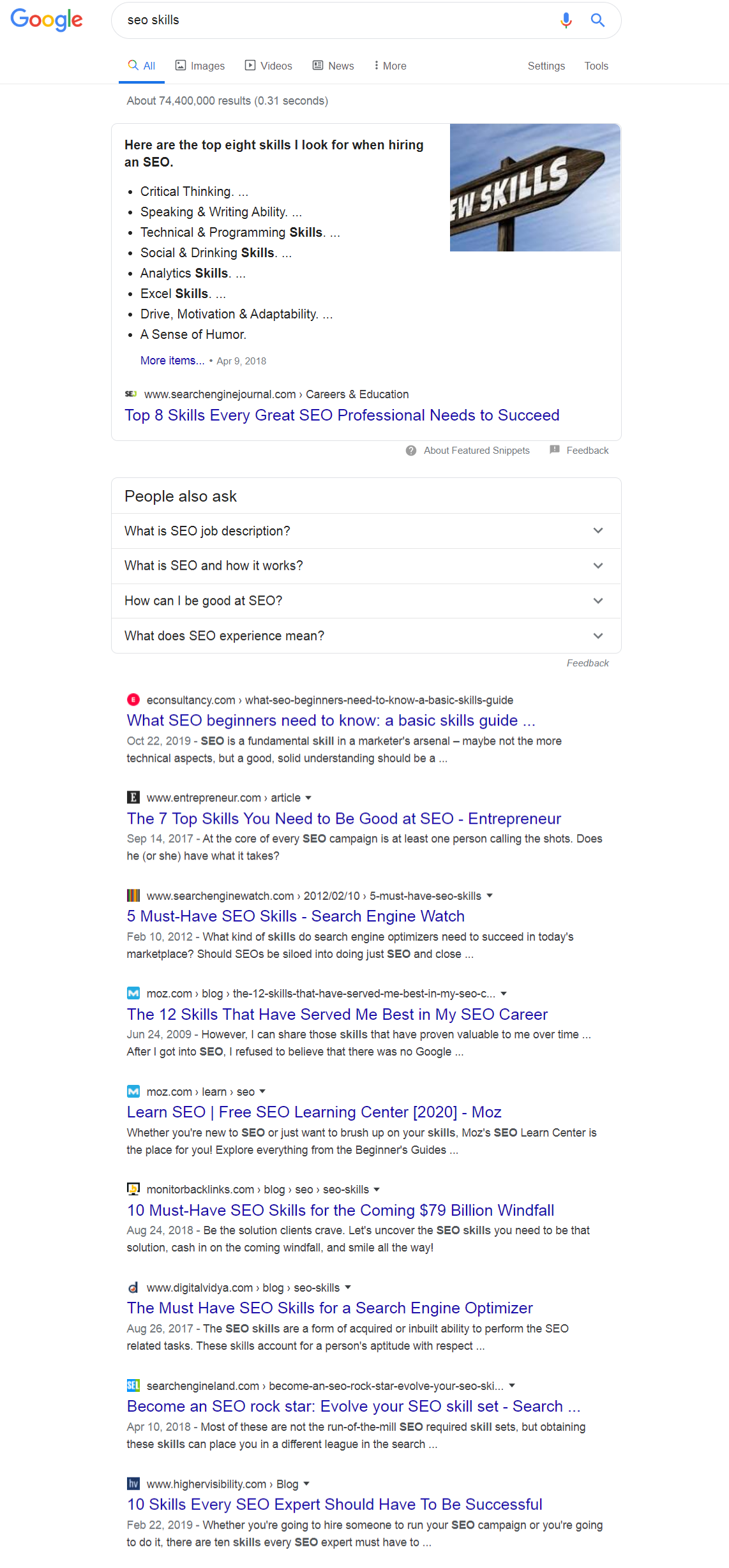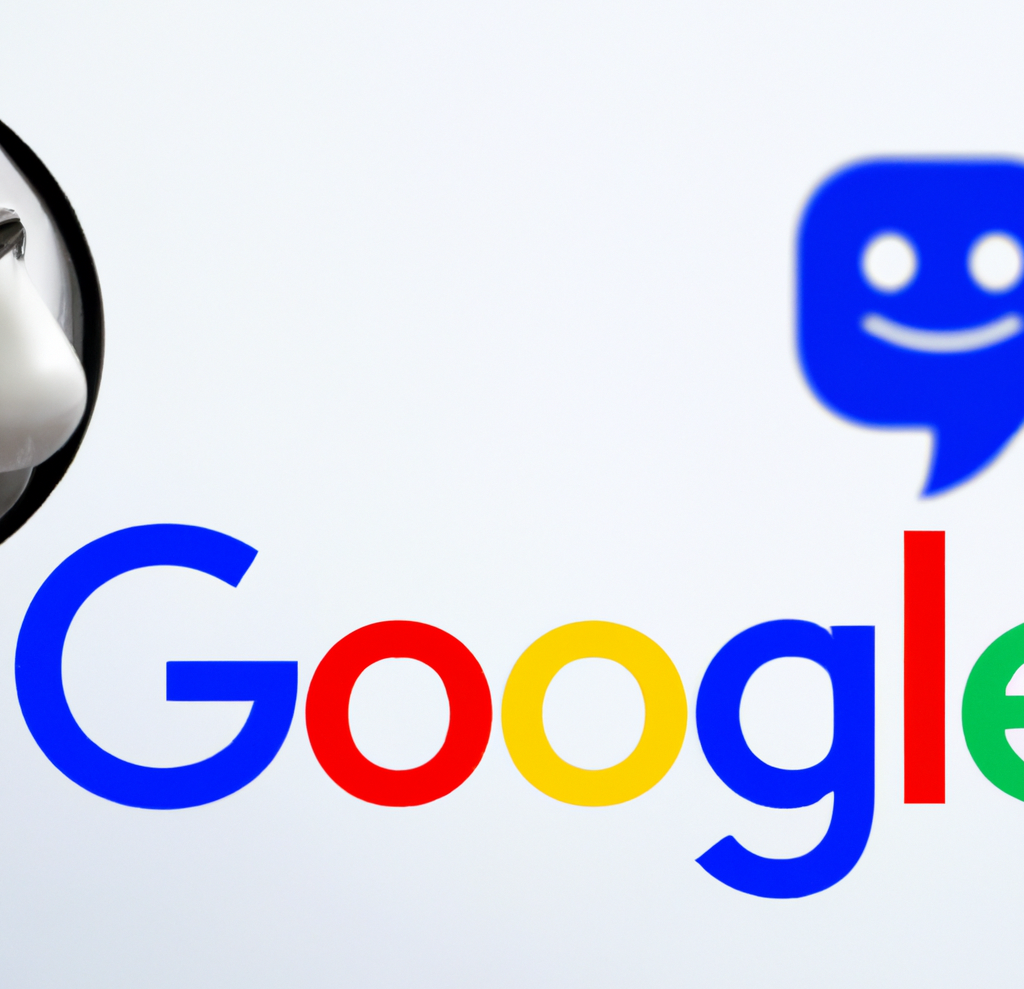Google: Webpages with Featured Snippets Won’t Appear Twice on Page 1

Google’s Danny Sullivan has confirmed that webpages in a featured snippet position will no longer be repeated in regular Page 1 organic listings.
This is a brand new change rolling out as of today.
The change will affect 100% of all search listings worldwide.
If a web page listing is elevated into the featured snippet position, we no longer repeat the listing in the search results. This declutters the results & helps users locate relevant information more easily. Featured snippets count as one of the ten web page listings we show.
— Danny Sullivan (@dannysullivan) January 22, 2020
Today, 100% globally.
— Danny Sullivan (@dannysullivan) January 22, 2020
Previously, it was not uncommon to see to see webpages in a featured snippet position appear twice on Page 1 of search results.
Going forward, that will no longer be the case.
Now, a webpage only gets one opportunity to appear on Page 1.
As Sullivan states, featured snippets count as one of the 10 webpage listings shown on the first page of search results.
This tweet from Shelly Fagin pretty much sums it up:
So I guess we need to stop referring to a Featured Snippet as Position Zero now huh. #seo #featuredsnippets #googleupdate
— Shelly Fagin (@shellyfagin) January 22, 2020
Let’s look at an example.
This Search Engine Journal post, Top 8 Skills Every Great SEO Professional Needs to Succeed, used to have a feature snippet and rank in Position 1.
Now the SERP (search engine results page) looks like this:

The organic listing for that Search Engine Journal post now appears at the top of Page 2 (or, position 11).

According to Pete Meyers of Moz, webpages in a featured snippet position have had their regular organic results pushed back to the top of Page 2. Although Danny Sullivan later tweeted that appearing at the top of, or even on Page 2, is not guaranteed.
Given that this update just rolled out today, it’s unclear how tools such as Search Console will handle the change.
Google’s John Mueller may provide further details tomorrow (January 23).
What If You Lose Your Featured Snippet?
In the past, if you lost a featured snippet, you’d still be on Page 1.
But now what will happen if you lose a featured snippet?
Do you return to Page 1 automatically, as an organic result beneath the new featured snippet?
Sullivan tweeted the following when asked about this scenario:
I would expect so. To be a featured snippet, you had to rank in the top results. Then we elevated. And now we deduplicate. If you don’t get featured, deduplication ends.
— Danny Sullivan (@dannysullivan) January 22, 2020
While Sullivan’s statement doesn’t seem 100 percent definitive, that would make sense – so hopefully that’s what Google will be doing. But that’s one you should definitely watch out for.
What About SERPs with 2 Featured Snippets?
What will happen in cases where a SERP returns two featured snippets for a query?
Search Engine Journal’s Executive Editor Danny Goodwin asked Sullivan just that on Twitter. Here’s what Sullivan said:
Deduplicate both. The whole page two stuff, by the way, people shouldn’t get hung up on. It’s about deduplicating on the first page. It’s not always guaranteed the URL will somehow come back up on the second page.
— Danny Sullivan (@dannysullivan) January 22, 2020
What’s important to note here is that just because you get a featured snippet, you won’t necessarily appear at the top of Page 2. As Sullivan noted: “It’s not always guaranteed the URL will somehow come back up on the second page.”
Sullivan also added that deduplication can happen beyond Page 2:
Nothing I’ve shared says you can’t have duplication happen beyond the first page of results. Deduplication is only about what happens on the first page. As things evolve, the whole “it’s showing up on page two” might not happen. So I wouldn’t say that’s how it works.
— Danny Sullivan (@dannysullivan) January 22, 2020
Early Reaction from the SEO Community
We asked Search Engine Journal contributors for their opinion, here are some of the responses so far:
Alan Bleiweiss, Alan Bleiweiss Consulting
Consensus for some of us is we need to test and evaluate deep data because serious loss of organic traffic on key phrases could require blocking the Featured Snippet from Google use at the code level. There are so many scenarios, possibilities, ramifications that it’s way too early to make any rash decisions. Yet ignoring this is a very serious risk at this point.
Data. I need data. Across different industries, different intent types, different phrase types (short vs long tail). Organic drop small, not at all, or big? Impact on traffic? Impact on CONVERTING traffic? What happens with short-term data vs. long term trend reality?
Brodie Clark, Brodie Clark Consulting:
Initial reaction is definitely frustration. Especially for those clients where you’ve spent countless hours trying to get the Featured Snippet. But I totally get why the change has been made. There’s always a silver lining to these things though.
I wrote a case study (published next week on Moz) about a site that gets 1m+ organic visits p/mo but doesn’t rank for any Featured Snippets. Result was that they’ve been filtered out algorithmically. This change means that they are only going upward, which is great for them.
Looking forward to digging into this more.
Dave Davies, Beanstalk Internet Marketing
My initial thought is: featured snippets are now for informational queries and branding but may need to be pulled back on for terms that may have conversion possibilities.
As Alan Bleiweiss accurately asserts though … need data.
There’s also that part where I’d likely rather be position 0 than organic 7, so I suspect it will heavily depend on what Page 1 position was/is held outside it.
Roger Montti, Owner of MartiniBuster.com & SEJ News Writer
This is unknown territory. So the best thing to do is monitor traffic to specific pages that rank for Featured Snippet and see how that performs.
Adding a nosnippets meta tag might backfire because position one in organic isn’t guaranteed.
So my advice to clients is: don’t jump before looking first.
More Resources
AI
Exploring the Evolution of Language Translation: A Comparative Analysis of AI Chatbots and Google Translate

According to an article on PCMag, while Google Translate makes translating sentences into over 100 languages easy, regular users acknowledge that there’s still room for improvement.
In theory, large language models (LLMs) such as ChatGPT are expected to bring about a new era in language translation. These models consume vast amounts of text-based training data and real-time feedback from users worldwide, enabling them to quickly learn to generate coherent, human-like sentences in a wide range of languages.
However, despite the anticipation that ChatGPT would revolutionize translation, previous experiences have shown that such expectations are often inaccurate, posing challenges for translation accuracy. To put these claims to the test, PCMag conducted a blind test, asking fluent speakers of eight non-English languages to evaluate the translation results from various AI services.
The test compared ChatGPT (both the free and paid versions) to Google Translate, as well as to other competing chatbots such as Microsoft Copilot and Google Gemini. The evaluation involved comparing the translation quality for two test paragraphs across different languages, including Polish, French, Korean, Spanish, Arabic, Tagalog, and Amharic.
In the first test conducted in June 2023, participants consistently favored AI chatbots over Google Translate. ChatGPT, Google Bard (now Gemini), and Microsoft Bing outperformed Google Translate, with ChatGPT receiving the highest praise. ChatGPT demonstrated superior performance in converting colloquialisms, while Google Translate often provided literal translations that lacked cultural nuance.
For instance, ChatGPT accurately translated colloquial expressions like “blow off steam,” whereas Google Translate produced more literal translations that failed to resonate across cultures. Participants appreciated ChatGPT’s ability to maintain consistent levels of formality and its consideration of gender options in translations.
The success of AI chatbots like ChatGPT can be attributed to reinforcement learning with human feedback (RLHF), which allows these models to learn from human preferences and produce culturally appropriate translations, particularly for non-native speakers. However, it’s essential to note that while AI chatbots outperformed Google Translate, they still had limitations and occasional inaccuracies.
In a subsequent test, PCMag evaluated different versions of ChatGPT, including the free and paid versions, as well as language-specific AI agents from OpenAI’s GPTStore. The paid version of ChatGPT, known as ChatGPT Plus, consistently delivered the best translations across various languages. However, Google Translate also showed improvement, performing surprisingly well compared to previous tests.
Overall, while ChatGPT Plus emerged as the preferred choice for translation, Google Translate demonstrated notable improvement, challenging the notion that AI chatbots are always superior to traditional translation tools.
Source: https://www.pcmag.com/articles/google-translate-vs-chatgpt-which-is-the-best-language-translator
Google Implements Stricter Guidelines for Mass Email Senders to Gmail Users

Beginning in April, Gmail senders bombarding users with unwanted mass emails will encounter a surge in message rejections unless they comply with the freshly minted Gmail email sender protocols, Google cautions.
Fresh Guidelines for Dispatching Mass Emails to Gmail Inboxes In an elucidative piece featured on Forbes, it was highlighted that novel regulations are being ushered in to shield Gmail users from the deluge of unsolicited mass emails. Initially, there were reports surfacing about certain marketers receiving error notifications pertaining to messages dispatched to Gmail accounts. Nonetheless, a Google representative clarified that these specific errors, denoted as 550-5.7.56, weren’t novel but rather stemmed from existing authentication prerequisites.
Moreover, Google has verified that commencing from April, they will initiate “the rejection of a portion of non-compliant email traffic, progressively escalating the rejection rate over time.” Google elaborates that, for instance, if 75% of the traffic adheres to the new email sender authentication criteria, then a portion of the remaining non-conforming 25% will face rejection. The exact proportion remains undisclosed. Google does assert that the implementation of the new regulations will be executed in a “step-by-step fashion.”
This cautious and methodical strategy seems to have already kicked off, with transient errors affecting a “fraction of their non-compliant email traffic” coming into play this month. Additionally, Google stipulates that bulk senders will be granted until June 1 to integrate “one-click unsubscribe” in all commercial or promotional correspondence.
Exclusively Personal Gmail Accounts Subject to Rejection These alterations exclusively affect bulk emails dispatched to personal Gmail accounts. Entities sending out mass emails, specifically those transmitting a minimum of 5,000 messages daily to Gmail accounts, will be mandated to authenticate outgoing emails and “refrain from dispatching unsolicited emails.” The 5,000 message threshold is tabulated based on emails transmitted from the same principal domain, irrespective of the employment of subdomains. Once the threshold is met, the domain is categorized as a permanent bulk sender.
These guidelines do not extend to communications directed at Google Workspace accounts, although all senders, including those utilizing Google Workspace, are required to adhere to the updated criteria.
Augmented Security and Enhanced Oversight for Gmail Users A Google spokesperson emphasized that these requisites are being rolled out to “fortify sender-side security and augment user control over inbox contents even further.” For the recipient, this translates to heightened trust in the authenticity of the email sender, thus mitigating the risk of falling prey to phishing attempts, a tactic frequently exploited by malevolent entities capitalizing on authentication vulnerabilities. “If anything,” the spokesperson concludes, “meeting these stipulations should facilitate senders in reaching their intended recipients more efficiently, with reduced risks of spoofing and hijacking by malicious actors.”
Google’s Next-Gen AI Chatbot, Gemini, Faces Delays: What to Expect When It Finally Launches

In an unexpected turn of events, Google has chosen to postpone the much-anticipated debut of its revolutionary generative AI model, Gemini. Initially poised to make waves this week, the unveiling has now been rescheduled for early next year, specifically in January.
Gemini is set to redefine the landscape of conversational AI, representing Google’s most potent endeavor in this domain to date. Positioned as a multimodal AI chatbot, Gemini boasts the capability to process diverse data types. This includes a unique proficiency in comprehending and generating text, images, and various content formats, even going so far as to create an entire website based on a combination of sketches and written descriptions.
Originally, Google had planned an elaborate series of launch events spanning California, New York, and Washington. Regrettably, these events have been canceled due to concerns about Gemini’s responsiveness to non-English prompts. According to anonymous sources cited by The Information, Google’s Chief Executive, Sundar Pichai, personally decided to postpone the launch, acknowledging the importance of global support as a key feature of Gemini’s capabilities.
Gemini is expected to surpass the renowned ChatGPT, powered by OpenAI’s GPT-4 model, and preliminary private tests have shown promising results. Fueled by significantly enhanced computing power, Gemini has outperformed GPT-4, particularly in FLOPS (Floating Point Operations Per Second), owing to its access to a multitude of high-end AI accelerators through the Google Cloud platform.
SemiAnalysis, a research firm affiliated with Substack Inc., expressed in an August blog post that Gemini appears poised to “blow OpenAI’s model out of the water.” The extensive compute power at Google’s disposal has evidently contributed to Gemini’s superior performance.
Google’s Vice President and Manager of Bard and Google Assistant, Sissie Hsiao, offered insights into Gemini’s capabilities, citing examples like generating novel images in response to specific requests, such as illustrating the steps to ice a three-layer cake.
While Google’s current generative AI offering, Bard, has showcased noteworthy accomplishments, it has struggled to achieve the same level of consumer awareness as ChatGPT. Gemini, with its unparalleled capabilities, is expected to be a game-changer, demonstrating impressive multimodal functionalities never seen before.
During the initial announcement at Google’s I/O developer conference in May, the company emphasized Gemini’s multimodal prowess and its developer-friendly nature. An application programming interface (API) is under development, allowing developers to seamlessly integrate Gemini into third-party applications.
As the world awaits the delayed unveiling of Gemini, the stakes are high, with Google aiming to revolutionize the AI landscape and solidify its position as a leader in generative artificial intelligence. The postponed launch only adds to the anticipation surrounding Gemini’s eventual debut in the coming year.
-

 PPC5 days ago
PPC5 days ago19 Best SEO Tools in 2024 (For Every Use Case)
-
SEARCHENGINES7 days ago
Daily Search Forum Recap: April 17, 2024
-
SEARCHENGINES6 days ago
Daily Search Forum Recap: April 18, 2024
-
SEARCHENGINES5 days ago
Daily Search Forum Recap: April 19, 2024
-

 MARKETING6 days ago
MARKETING6 days agoEcommerce evolution: Blurring the lines between B2B and B2C
-

 SEO6 days ago
SEO6 days ago2024 WordPress Vulnerability Report Shows Errors Sites Keep Making
-

 WORDPRESS5 days ago
WORDPRESS5 days agoHow to Make $5000 of Passive Income Every Month in WordPress
-

 WORDPRESS6 days ago
WORDPRESS6 days ago10 Amazing WordPress Design Resouces – WordPress.com News














